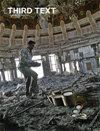Arts in Dark Times
IF 0.1
3区 艺术学
0 ART
引用次数: 1
Abstract
Abstract This article explores Palestinians’ representations in visual art of the existential crisis they faced following the destruction of Palestinian society during the 1948 War, known as the Nakba. The article explores how this colossal event has been conveyed artistically, and discusses artworks that revolve around Palestinians’ subsequent states of being, which are represented by two main motifs, the ‘good Arab’ and the cactus tree. In particular, it assesses how these motifs were used to convey varied, and even opposite, states of being and consciousness, as well as survival strategies, that go beyond commonplace views and perceptions about Palestinians in Israel after 1948. Moreover, this article discusses how the allegorical language of these artworks augments their meanings and might open a window into the world of the Palestinians, who lack archives, official historical narratives, and institutions of remembrance.黑暗时代的艺术
本文探讨了巴勒斯坦人在1948年的Nakba战争中所面临的生存危机的视觉艺术表现。本文探讨了这一重大事件是如何以艺术方式传达的,并讨论了围绕巴勒斯坦人随后存在状态的艺术作品,这些艺术作品以两个主要主题为代表,“好阿拉伯人”和仙人掌树。特别是,它评估了这些主题是如何被用来传达不同的,甚至相反的,存在和意识状态,以及生存策略,超越了对1948年后以色列巴勒斯坦人的普通观点和看法。此外,本文还讨论了这些艺术作品的寓言语言如何增强其意义,并可能为巴勒斯坦人的世界打开一扇窗户,他们缺乏档案,官方历史叙述和纪念机构。
本文章由计算机程序翻译,如有差异,请以英文原文为准。
求助全文
约1分钟内获得全文
求助全文
来源期刊

Third Text
ART-
CiteScore
0.40
自引率
0.00%
发文量
39
期刊介绍:
Third Text is an international scholarly journal dedicated to providing critical perspectives on art and visual culture. The journal examines the theoretical and historical ground by which the West legitimises its position as the ultimate arbiter of what is significant within this field. Established in 1987, the journal provides a forum for the discussion and (re)appraisal of theory and practice of art, art history and criticism, and the work of artists hitherto marginalised through racial, gender, religious and cultural differences. Dealing with diversity of art practices - visual arts, sculpture, installation, performance, photography, video and film.
 求助内容:
求助内容: 应助结果提醒方式:
应助结果提醒方式:


